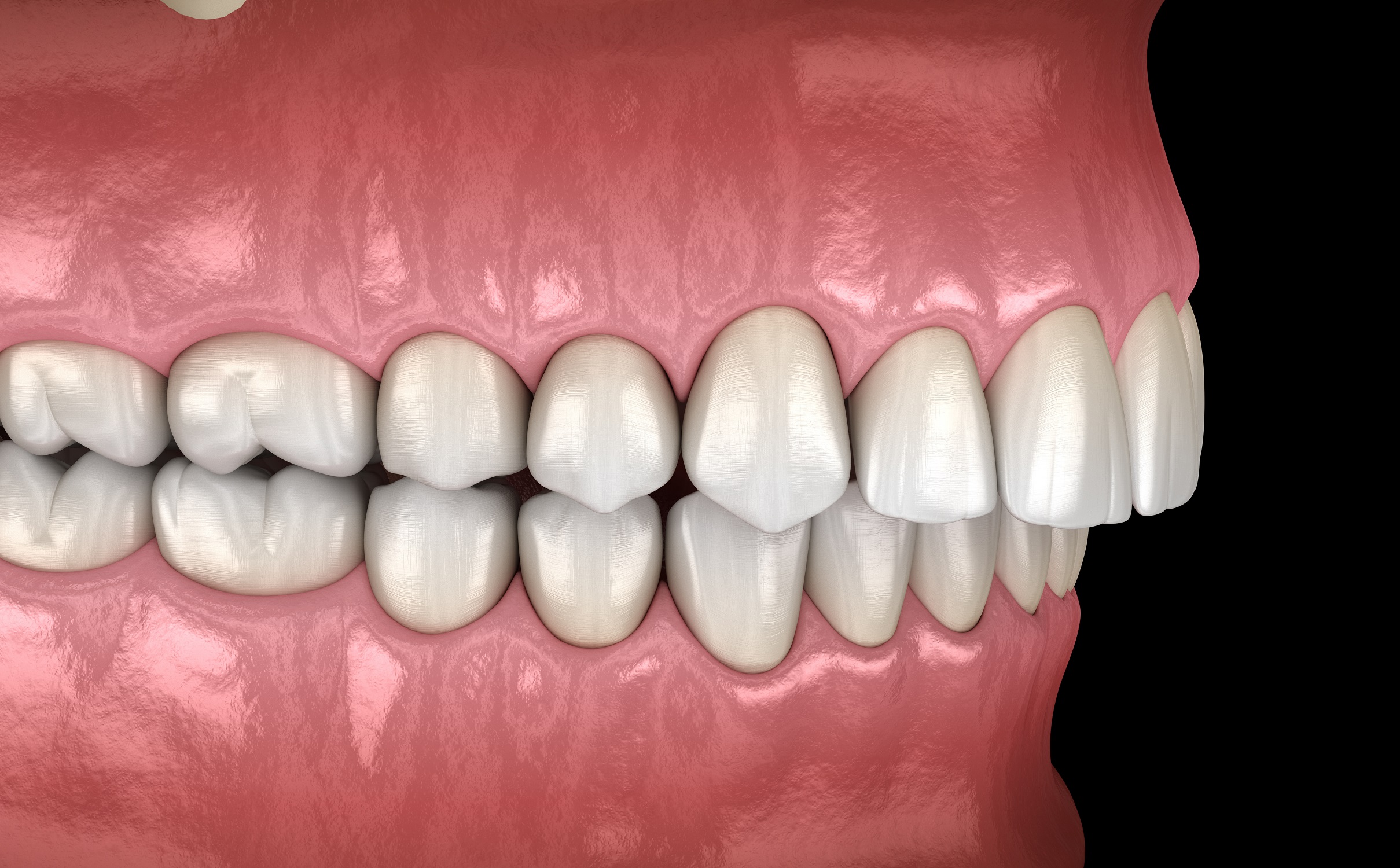Dental malocclusions, or misalignments, specifically overbites and underbites, are common issues that have a huge impact on dental health and aesthetics. Understanding underbite causes and overbite causes, as well as their treatments is important for keeping your mouth healthy.
What are Overbites and Underbites?
An overbite, commonly referred to as “buck teeth,” happens when the upper teeth extend further out than the lower teeth. On the other hand, an underbite is the opposite, where the lower teeth extend outward further than the upper front teeth. These conditions are caused by misalignment of the teeth and jaws and, if left untreated, can lead to numerous complications.
Overbite Causes
Genetics: Genetic factors play a significant role in causing overbites. Just like other inherited traits, dental structure can be passed down through genetics. If your parents or grandparents had overbites, there’s a higher chance you’ll end up with the condition as well.
Childhood Habits: Habits like thumb-sucking and using pacifiers for too long can cause overbites to develop, especially if they continue past three years of age. These actions can result in the teeth shifting and the jaw misaligning.
Tongue-Thrusting: Tongue-thrusting, where the tongue presses too far forward in the mouth, can put extra pressure on the teeth and cause an overbite to form. This habit is typically noticed in children and can continue into adulthood if it’s not dealt with.
Teeth Grinding (Bruxism): Bruxism, or teeth grinding, can also cause the teeth to move out of alignment and lead to an overbite, especially when it continues for extended periods without treatment. The constant grinding wears down the teeth and can change the shape of the dental arches over time.
Other Factors: Additional overbite causes include excessive nail biting and using traditional sippy cups, which can affect dental development and alignment. These behaviors exert forces on the teeth that teeth aren’t supposed to experience, promoting misalignment.
Underbite Causes
Genetics: Just like overbites, underbites can be genetically inherited. Family traits often include specific jaw structures that predispose people to this condition. If your family has a history of pronounced lower jaws, you might develop an underbite as well.
Jaw Growth Issues: Disproportionate growth between the upper and lower jaws is a common cause of underbites. If the lower jaw grows more than the upper jaw, an underbite can develop. This is often noticeable during childhood and adolescence as the jaw bones grow at different speeds.
Injuries: Trauma or injury to the jaw or face can knock the teeth out of alignment and lead to an underbite. Injuries that affect the jaw’s growth or its structure can also result in a misaligned bite.
Other Factors: Untreated bruxism can make underbites worse, leading to more dental issues like increased risks of tooth decay, gum disease, and discomfort. Bruxism can also cause uneven wear on the teeth, further contributing to the misalignment.
Health Implications of Overbites and Underbites
Overbites can result in various complications, like jaw pain, headaches, earaches, difficulty chewing, tooth decay, and gum disease. The misalignment puts a lot of stress on the jaw joints and muscles, leading to discomfort and pain. Additionally, overbites can make it harder to maintain proper oral hygiene, increasing the risk of dental issues.
Underbites can cause similar issues like increased risk of tooth decay, gum disease, jaw pain, headaches, speech difficulties, and uneven tooth wear. The lower teeth protruding outward can damage the upper teeth and gums, making the dental problems worse. Underbites can also impact how you speak and chew, going a little further toward affecting life in general.
Treatment Options
Orthodontic Solutions: Orthodontic treatments for underbites and overbites include things like braces, clear aligners, and retainers are commonly used to correct them. These methods slowly align the teeth over time, correcting the bite. Braces and clear aligners can apply consistent pressure to gradually move the teeth into the desired position.
Surgical Options: In severe cases, corrective jaw surgery, known as orthognathic surgery, may be needed. This procedure realigns the jawbones to ensure proper bite function and aesthetics. Orthognathic surgery is often combined with orthodontic treatment to achieve the best results.
Preventative Measures: Early dental evaluations and interventions can keep these conditions from getting worse. Additionally, avoiding prolonged thumb-sucking and pacifier use can go a long way in reducing the risk of developing overbites and underbites. Regular dental check-ups and early orthodontic assessments can identify these issues before they become worse and provide timely treatment.
Preventing and Treating Overbites and Underbites
Understanding dental malocclusions and the causes of overbites and underbites is crucial for seeking appropriate treatment. Early diagnosis leads to early intervention, which plays a huge role in preventing complications and improving overall dental health. If you think you have any jaw misalignment, speak with a dental professional for proper diagnosis and treatment. By addressing these issues early on, you can make sure to have better oral health and improve your quality of life.




